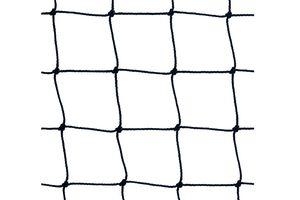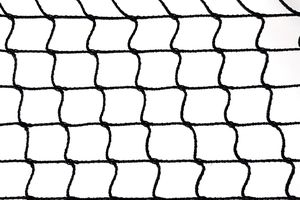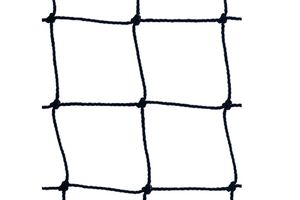Why You Should Use Roof Bird Netting
As a commercial business owner, you know that keeping your property in tip-top shape is essential to maintaining a good reputation. Part of protecting your building’s exterior is preventing birds from roosting on ledges and in eaves.
Not only is this unsightly, but it can also lead to damage as the birds scratch and peck at the surface of your building. That’s where roof bird netting comes in.
Roof bird netting is a humane and effective way to keep birds away from your property without harming them.
It’s a highly effective and budget-friendly solution compared to other methods like spikes, wires, and ultrasonic bird deterrents. Plus, it's much less disruptive to the birds themselves, and it can be used in a variety of settings.
Considering roof bird netting is a great option if you’re looking for a way to keep birds off your property.
How Roof Bird Netting Works
Roof bird netting is made of durable, UV-resistant polypropylene mesh that is stretched across an area to create a physical barrier between the birds and your building.
The netting is virtually invisible so that it won’t detract from the aesthetics of your property. The mesh is small enough to allow air and water to pass through but prevents birds from getting through.
The Benefits of Roof Bird Netting
There are several benefits to using roof bird netting:
It’s humane
The last thing you want is for birds to get hurt or killed trying to get onto your property. With roof bird netting, they will be safely discouraged from roosting without suffering any harm.
It’s effective
Roof bird netting will keep birds away from your property, so you don’t have to worry about them roosting and causing damage.
It’s durable
UV-resistant and made of strong polypropylene, roof bird netting can withstand all kinds of weather conditions without rusting or deteriorating.
It’s low-maintenance
Once installed, roof bird netting requires no upkeep other than the occasional inspection to make sure it’s still in good condition.
It’s affordable
Compared to other bird control methods, roof bird netting is very cost-effective.
How To Safely Install Anti-Bird Roof Nets
There are a few steps to take before you can begin the installation.
First off, you need to calculate the type of roof netting needed.
Secondly, how much roof netting will you need? Are you looking to protect an open space between roofs? Or do you require the complete covering of a roof area to minimise gaps?
Thirdly, you should consider the installation process and any safety hazards that may be associated with it.
To install roof netting:
-
Start by measuring the area you want to cover and calculate the amount of roof bird netting you will need.
-
Next, determine the best way to attach the netting to your building. This will usually involve attaching it to the eaves or gutters with screws, nails, or clips.
-
Once you have your materials, you can begin the installation process. Be sure to take safety precautions and use caution when working on a ladder.
-
Begin by attaching one end of the netting to the eaves or gutters of your building. Work your way around, being sure to stretch the netting taut as you go.
-
Once you’ve made your way around the perimeter, cut off any excess netting and secure the end.
-
Inspect the netting regularly to ensure it is still in good condition and that there are no gaps or holes.
If you follow these steps, you can be sure that your roof bird netting will be installed correctly and will effectively keep birds away from your property.
Roosting Birds
What if you have roosting birds on your roof? Well, the first step is to try and determine how they are getting onto your roof in the first place. Are there any gaps or holes that they could be using? Are there trees or other structures nearby that they could be using as a launch point?
Once you’ve determined how they are getting on your roof, you can take steps to block their access. This might involve trimming back trees or bushes, installing bird netting, or sealing up any gaps or holes.
If you have birds that are already roosting on your roof, you can try to scare them away with noise makers, water hoses, or other devices. You can also try to catch and release them far away from your property.
However, the most effective way to get rid of roosting birds is to remove their food source - this will encourage them to move on to another location.
Final Thoughts: Using Roof Netting For Bird Control
If you’re looking for a humane, effective, and affordable way to keep birds off your property, roof bird netting is the perfect solution. Made of durable polypropylene mesh, roof bird netting will provide a physical barrier between the birds and your building without harming them.
It’s also low maintenance and can withstand all kinds of weather conditions. So why wait? Get started on protecting your property today with roof bird netting!
FAQs
Does anti-bird netting work?
Yes! Erecting bird control netting onto your roof can be extremely effective for keeping birds off your property.
It’s important to make sure that the netting is correctly installed and that there are no gaps or holes, as this will give the birds access.
Is black or white bird netting better?
It depends on your specific situation. If you’re trying to keep birds away from a dark-coloured building, white bird netting will be more visible and, therefore, more effective.
However, if you’re trying to keep birds away from a light-coloured building, black bird netting will be less visible and, therefore, more effective.
Is roof bird netting easy to repair?
Yes - just make sure to regularly inspect roofing areas and fix any holes or gaps as soon as possible.
How often should I inspect my roof bird netting?
It’s a good idea to inspect your roof bird netting at least once a month to ensure that it is still in good condition and that there are no gaps or holes.



